Colombia is working to polish the reputation of its emeralds, which — much like Africa’s blood diamonds — have lost their luster due to decades of violence surrounding the treacherous gemstone trade.
“The emerald’s image is linked to that of Colombia, and Colombia is traditionally seen as being connected to war, drugs, trafficking,” said Corentin Quideau, a French jewelry expert.
Considered the most beautiful in the world, Colombia’s emeralds totaled US$146.5 million in exports last year, and over the years, they have accounted for 50 to 90 percent of total global production.
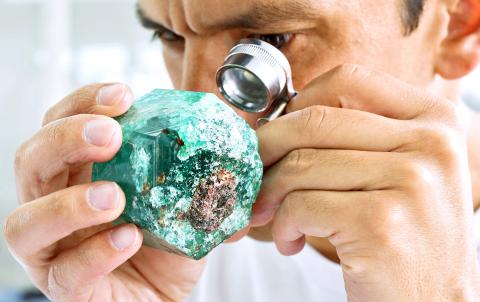
Photo: AFP
However, they have also been linked to bloodshed — including a “green war” in the 1980s that killed 3,500 people.
Colombia’s emeralds were the focus of a recent international symposium in the capital, Bogota, the first of its kind, that drew several hundred participants.
The goal is to put the green gem back on a pedestal, said Quideau, brand strategist for Colombia’s famous Muzo mine, whose resume includes stints at big luxury labels such as Cartier, Boucheron and Louis Vuitton.
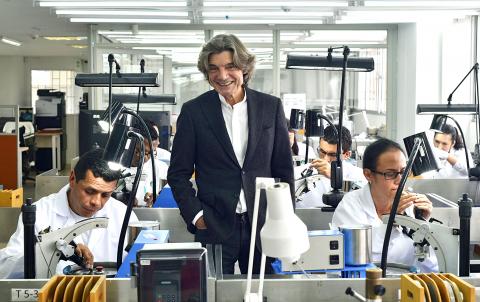
Photo: AFP
Located in the heart of Colombia, about 200km north of Bogota, the Muzo mine was first exploited by indigenous groups, followed by Spanish conquistadores starting in the 16th century.
It is here that the “Fura” was extracted — an 11,000-carat, 2.27kg emerald that wowed the public when it was displayed in 2011.
“The color, the purity of these stones make them unique,” said US expert Ronald Ringsrud, who speaks of Colombia’s emeralds as if they were rare flowers.
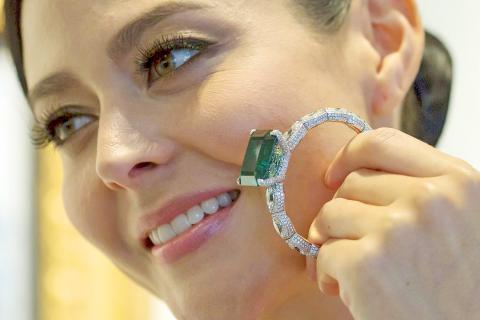
Photo: Reuters
“They grow in sedimentary soil, a softer geological environment” that allows the crystal to thrive better than in granite, he said.
For decades, the industry was dominated by Victor Carranza, a gun-toting peasant-turned-billionaire who gained control of the Muzo mine in the 1970s and fought off all attempts to take it from him — including by feared drug lord Pablo Escobar.
The “emerald czar” ran his operation with few scruples and alleged ties to right-wing paramilitary groups. He defied multiple attempts on his life and finally died of cancer in 2013.
He passed the company to his sole confidant, former US diplomat Charles Burgess, who set about softening its image.
He “set a goal of bringing the Colombian emerald to the same level as Colombian coffee: to turn it into a product that all Colombians feel proud of,” Burgess said.
He brought out that slogan repeatedly at the recent symposium in Bogota, where industry insiders discussed putting the shine back on the country’s emeralds.
Proposals included launching a national brand, “Mothergem,” which Emerald Exporters Association president Gabriel Angarita said would “distinguish Colombian emeralds as a unique gift of nature.”
Meanwhile, the Colombian Emerald Federation proposed setting up an International Emerald Committee to “promote sustainable development [and] support policies that favor the growth of the industry.”
Individual mines are also getting on board, including the storied Muzo.
In the name of modernization and greater transparency, Burgess invested more than US$100 million in Muzo and suspended production for two years to upgrade mining techniques and personnel management.
“Muzo emeralds are structurally very complex, nearly perfect, but when [the miners] used dynamite, it caused fissures in the stones,” said Dante Valencia, a master gem cutter at the company’s state-of-the-art workshop in Bogota.
“This used to be the Wild West,” Quideau said.
However, things are starting to change, he said.
At Muzo, the 750 miners “have gone from a barbaric and archaic pay system based on the consensual theft of emeralds ... to real contracts and salaries,” he said.
Now, mining firms need to ensure the traceability of all gems from the mine shaft to the retailer, he said, adding that some “traditional forces” in the industry are still resistant to change.

A proposed 100 percent tariff on chip imports announced by US President Donald Trump could shift more of Taiwan’s semiconductor production overseas, a Taiwan Institute of Economic Research (TIER) researcher said yesterday. Trump’s tariff policy will accelerate the global semiconductor industry’s pace to establish roots in the US, leading to higher supply chain costs and ultimately raising prices of consumer electronics and creating uncertainty for future market demand, Arisa Liu (劉佩真) at the institute’s Taiwan Industry Economics Database said in a telephone interview. Trump’s move signals his intention to "restore the glory of the US semiconductor industry," Liu noted, saying that
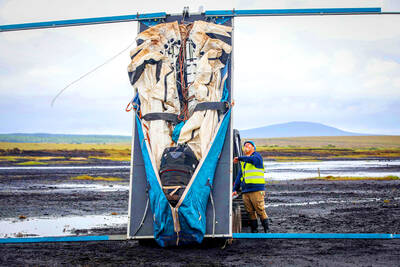
On Ireland’s blustery western seaboard, researchers are gleefully flying giant kites — not for fun, but in the hope of generating renewable electricity and sparking a “revolution” in wind energy. “We use a kite to capture the wind and a generator at the bottom of it that captures the power,” said Padraic Doherty of Kitepower, the Dutch firm behind the venture. At its test site in operation since September 2023 near the small town of Bangor Erris, the team transports the vast 60-square-meter kite from a hangar across the lunar-like bogland to a generator. The kite is then attached by a
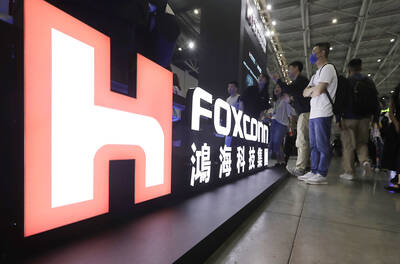
Foxconn Technology Co (鴻準精密), a metal casing supplier owned by Hon Hai Precision Industry Co (鴻海精密), yesterday announced plans to invest US$1 billion in the US over the next decade as part of its business transformation strategy. The Apple Inc supplier said in a statement that its board approved the investment on Thursday, as part of a transformation strategy focused on precision mold development, smart manufacturing, robotics and advanced automation. The strategy would have a strong emphasis on artificial intelligence (AI), the company added. The company said it aims to build a flexible, intelligent production ecosystem to boost competitiveness and sustainability. Foxconn
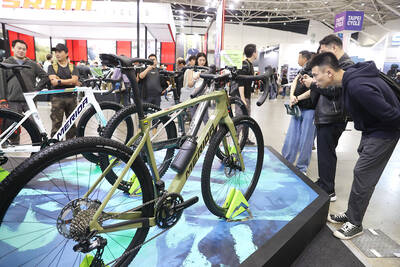
Leading Taiwanese bicycle brands Giant Manufacturing Co (巨大機械) and Merida Industry Co (美利達工業) on Sunday said that they have adopted measures to mitigate the impact of the tariff policies of US President Donald Trump’s administration. The US announced at the beginning of this month that it would impose a 20 percent tariff on imported goods made in Taiwan, effective on Thursday last week. The tariff would be added to other pre-existing most-favored-nation duties and industry-specific trade remedy levy, which would bring the overall tariff on Taiwan-made bicycles to between 25.5 percent and 31 percent. However, Giant did not seem too perturbed by the